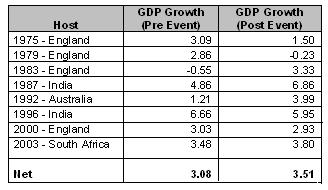I-Bhayankars!
Yesterday, my dad was elated when he got back from work. His former colleague had landed in Bombay for a few days to initiate his daughter into a high profile ibanking career. My mom, like all PR-specialist moms on earth, was scandalized that her son hadnt managed to get the most lucrative job on the planet. Trivial matters like the fact that this chick was gonna be at their equity research desk, or that she is getting paid less hold no significance whatsoever…
“dint they come to your campus??” as if that’s the only formality left for me to join the firm (leave alone attending the ppts, filling a zillion page form and beating 119 other smart asses to the job…) As a friend at my engg college described me to the fresher girl both of us were hitting on, a face like that of a constipated gorilla doesn’t help at the interview either!
This i-bank craze is something I will never understand. Nobody really knows what an i-bank does. But everyone wants a piece of the action. A few days back, I was having pav bhaji with a lady… any hopes of a second date were blown when she asked me how many ibanks came to our campus!!! Can u believe it? as if that was the only topic to discuss!! Just go to any of those pre-mba forums like pagalguy…. Everyone has decided that ibanking is the career for them! Well, if you cant beat the crowd, join it! so I keep telling my less informed friends and family that I have an ibanking role in a normal bank… whatever that means….
Being a banker means we buy the ET everyday and fold it neatly under our armpits, even if we don’t understand a thing of what is written there. First of all, I’d like to find the smarty pants who decided the paper shouldn’t be white… How else would you be able to spot a banker in the stiffling mumbai local train, that has more people per sq cm than the mosquitoes in Kochi? As they say, ET is more a part of the uniform rather than anything else… half of it is full of tables on the stock and commodity exchanges. They always use a font size smaller than the one we use to put our GPAs on our resumes!
Empirical research has shown that:
20% of the crowd is too old to read this tiny font
20% is too senior up in the organization to read up prices of individual stocks
20% are stockbrokers who monitor the prices real time on the ticker and so have no use for the stale news
20% are bschool students who just want to show their colleagues that they are majoring in fin
the remaining are final year engineering students who want to show their colleagues that they are so unemployable after engineering that they are being forced to take up an MBA.
Moms calling me for lunch….I’ll finish off with a slew of new PJs keeping up with the sentiment of this post….
Q: why should boyfriends beware of i-bankers?
Ans: Because they specialize in hostile takeovers!
Q: Why do investment bankers remind you of pimps?
Ans: Both make their money by taking their clients public
Labels: Finance



